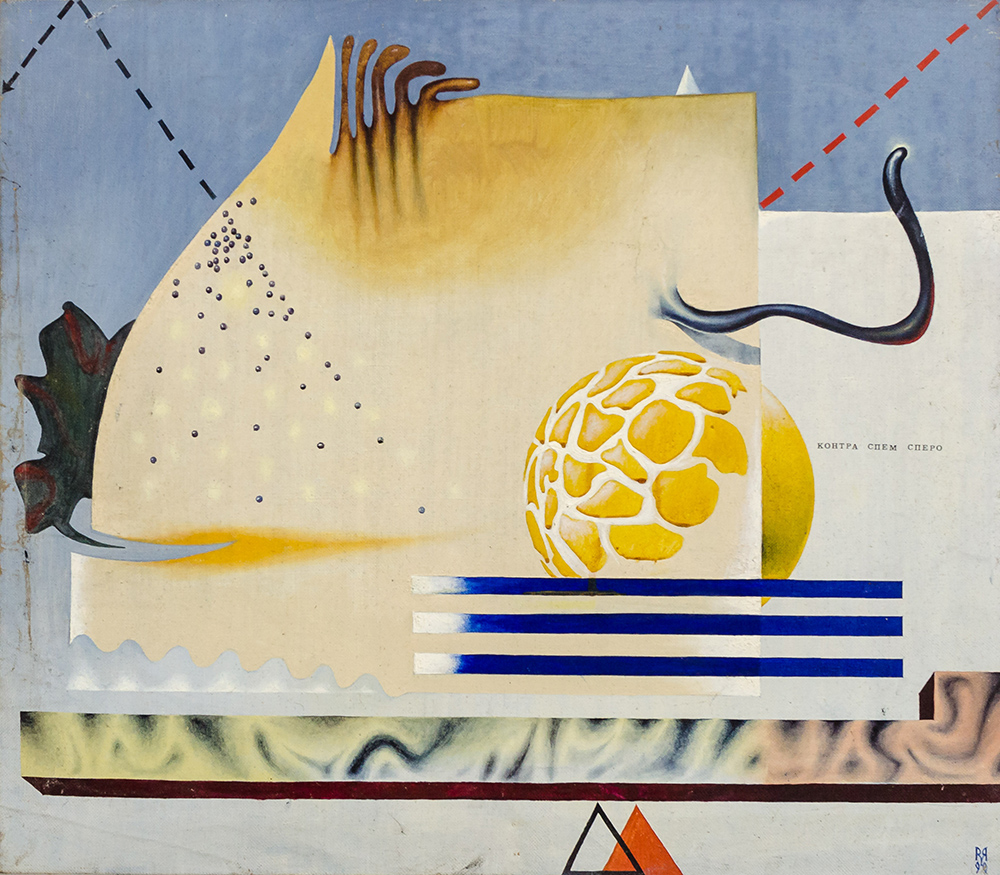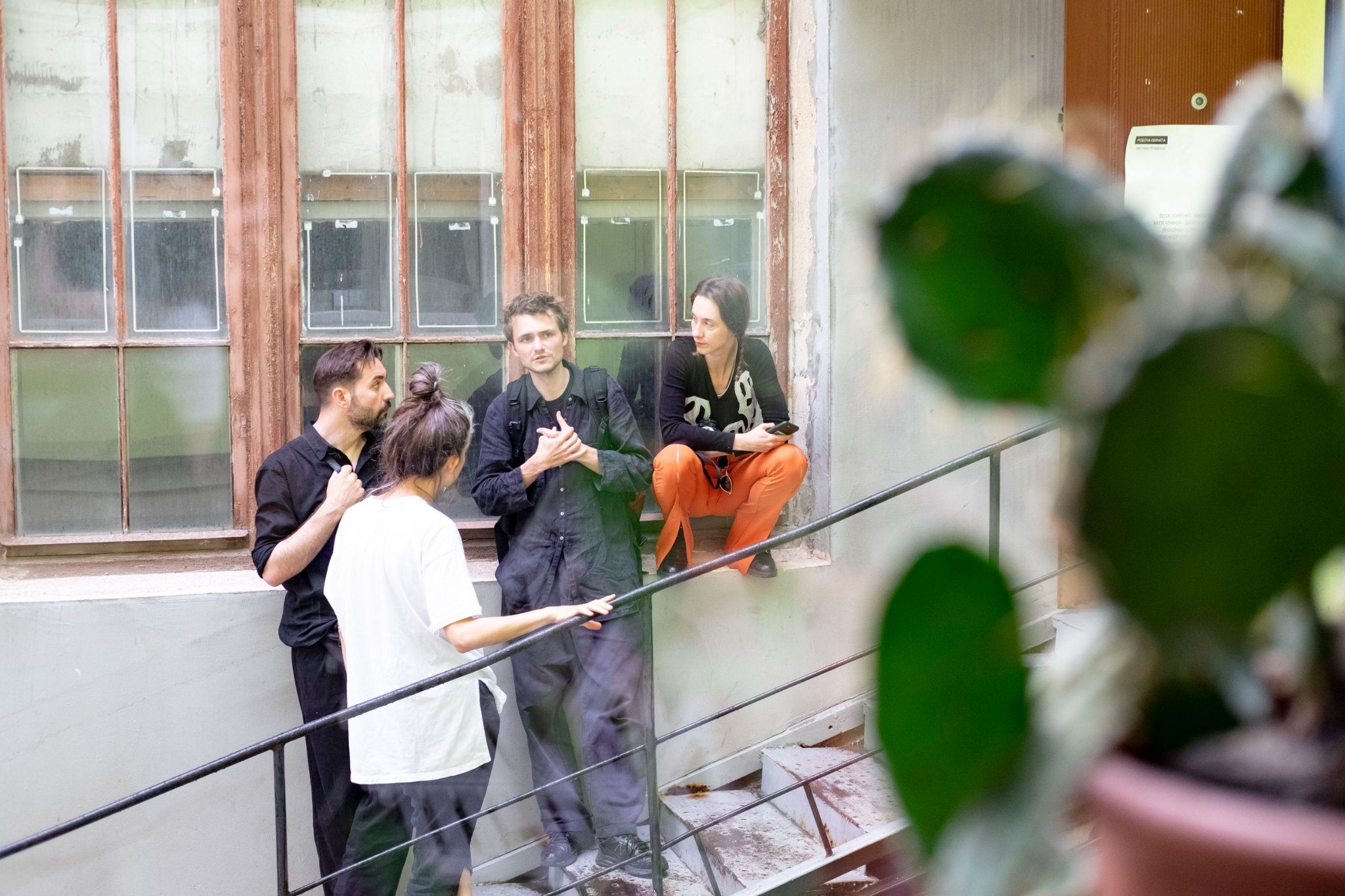
Due to the big war, Ivano-Frankivsk is having a rather new experience — many newly arrived people who begin to live and work here, rethinking this space in their own way and inevitably changing it. In recent months, the local community has welcomed thousands of Ukrainians from various regions. Some of them went farther west passing the city, some already returned home, and some stayed.
We asked the artists who came to the Working Room residency how they would describe ‘their own’ Ivano-Frankivsk, what inspiration from the city they have now and how it is changing under the influence of the war.
Kateryna Aliinyk, Luhansk — Kyiv

In my work, I combine painting and text, I interpret the topic of occupied Donbas through images of nature.
Before the full-scale war, I tried to show weak gestures of resistance of people who lived under occupation and couldn’t leave their land, their gardens. I spoke about that through natural images of soil and plants. For those people, their private plots of land in the occupied territories turned out to be the only zones of control. That was what happened with my relatives, but there are many such examples. This vegetative way of life has been going on for 8 years. I used to think a lot about the role of a passive observer of these events. And after the beginning of the Russian full-scale invasion of our land, I focused on the hidden processes and consequences of the war, which we cannot yet see, but which are there.
Also, now it is important for me to convey the image of healing. If until February 24 I was drawing bombs that sprouted into the ground in 8 years, now I’m drawing they being eaten by insects or decomposed.
I moved to Ivano-Frankivsk during the second week of the full-scale war. That’s how I found myself in this city for the first time. I was invited to take part in the residency program, so without thinking twice, my mother, my sister and I packed our stuff and came here. I didn’t know much about this city, but during my stay, I never wanted to move anywhere else so far.
Ivano-Frankivsk doesn’t feel like a city of war time. I feel more like a tourist here and not a person hiding from war.
My ‘place of strength’ here is the Asortymentna Kimnata gallery, where we were allocated a workshop. I have been here every day since I moved, except for the days when I went to Khata-Maisternia and Kolomyia. On the opening day of the Working Room exhibition, for the first time, I didn’t come to the workshop to work. Of course, Ivano-Frankivsk has spots with good coffee, and in the evening it is nice to walk downtown. But in general, I spent all my time here in the workshop.
Olia Yeremieieva, Kyiv — Lviv
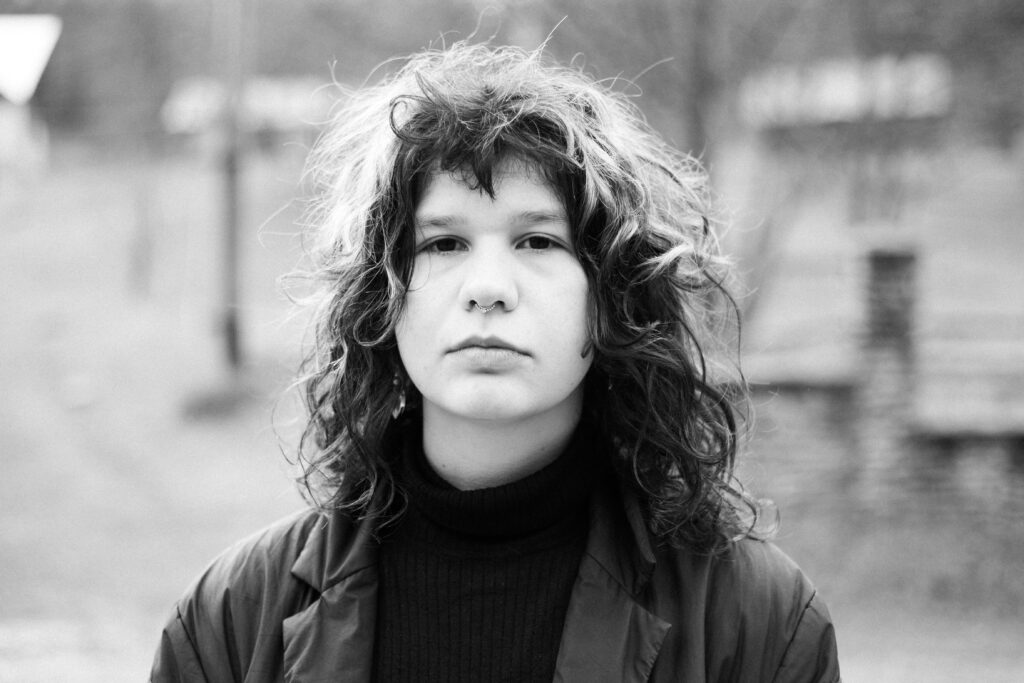
I worked on a photo project that tells about the ongoing war not as a completely unique phenomenon, but as a logical continuation of the Red Terror. I consider the theme of torture and violence against the body as one of the common methods of interaction and oppression within the framework of Russian terror. The relevance of this is confirmed by the consequences of the stay of the Russians in Bucha.
I also returned to drawing, although I hadn’t worked with this medium for a long time. I draw dead Russian soldiers. In a way, it is a curiosity and an exploration of bodies maimed by war. But my main, purely subjective goal is an attempt to completely dehumanize the occupiers.
My first visit to Ivano-Frankivsk was six years ago. I remember a huge festival of blacksmiths was happening in the city at that time. There were forged figures everywhere, there were many souvenirs on sale, and one could even try shooting with a bow. The city seemed very cozy to me at once. It’s already my fourth time here during the last six months. And the current impression of Ivano-Frankivsk is still similar to what I felt here for the first time.
Although visually the city is changing, even during the war, a somewhat idyll atmosphere is preserved here.
But it was only recently when Ivano-Frankivsk opened up to me in a new way — in a more artistic one.
I could not imagine that war could be like this. We are here on the homefront, of course. But I still didn’t think that during such times one could calmly go to have some coffee, to a concert, to hold an exhibition, to continue doing all kinds of hipster stuff. It seems as if all these things cannot exist during the war. Lately, I have noticed that I started to allow myself a little more ‘luxury stuff’: to go shopping, for example. Because I think: “What if I don’t live to see tomorrow? So why not allow myself something?”. It seems to me that I felt this most clearly in Ivano-Frankivsk.
Katia Buchatska, Zakarpattia — Lviv — Kyiv
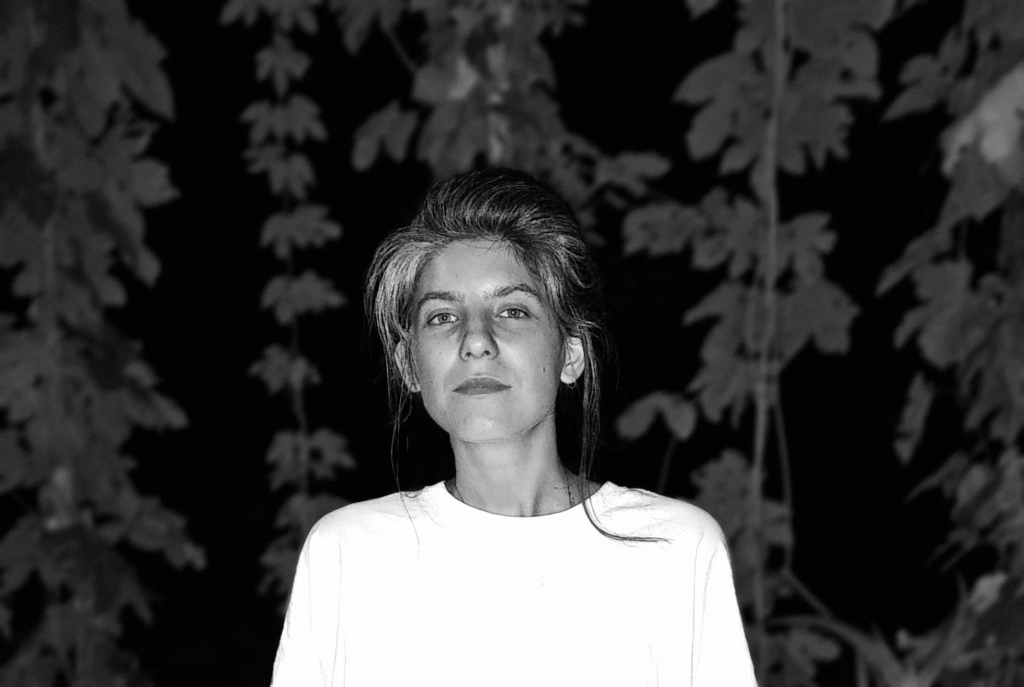
I am interested in questions of time and place of man in the world, what meanings we give to objects from the past and how they can be interpreted in the future.
On February 24, I was in Kryvorivnia, making an exposition of the museum of the Hutsul artist Paraska Plytka-Horytsvit. We were supposed to open the museum on March 1. Because of the full-scale war, this did not happen, so I went to Lviv. I realized that I could be more useful in a big city at that time. Later, the artist Lesia Khomenko, the initiator of the Working Room, invited me to participate in the residency.
At first, it was not obvious to me that I could continue my artistic practice. I was thinking: should I join the Armed Forces of Ukraine, should I do something unrelated to creativity, or do I still have the right to continue drawing?
It was the residency and communication with other artists that helped me get out of the state of guilt, as if my work was irrelevant, and return to my work. I began to visualize my experience of being on the home front—how I go through the war when I’m not directly involved in the army.
I first visited Ivano-Frankivsk in 2016. I always passed the city on my way to Kryvorivnia, where I worked with the heritage of Paraska Plytka-Horytsvit. In the first week of the war, I also passed Ivano-Frankivsk on my way from Kryvorivnia to Lviv. I stayed in the city for several hours, between bus changes. Nothing was working downtown, except the Delikacia restaurant in the main walking street. It was then that I found out that the music was no longer turned on, but instead, the united information marathon was broadcasted everywhere. In the restaurant, everyone listened to the news attentively. The waitresses touchingly apologized that they could not serve croissants with tuna, but they could serve salmon if we wanted. It was a little embarrassing.
Although people here are at a distance from the war zone, they become tense after hearing news from the frontline. I can really feel it.
Compared to Kyiv, in the west of the country, decentralization is currently taking place in terms of art. Today, many cultural processes are concentrated in Ivano-Frankivsk, Lviv, and Uzhhorod. Everyone gets to know each other here, new joint projects are created. This is a very important precedent for the development of local culture. To be honest, I’m even glad that it happened that way.
Ivano-Frankivsk is wonderful. Maybe I wouldn’t live here for the rest of my life, but I would love to live here for a while. Now there will be even more art. The reconstruction of Promprylad will continue, so there is hope that another ‘place of strength’ will appear on the map, where contemporary art will be concentrated. In a year or two, we will see a new Ivano-Frankivsk. And it’s very interesting to see what will come of it.
Sasha Kurmaz, Kyiv
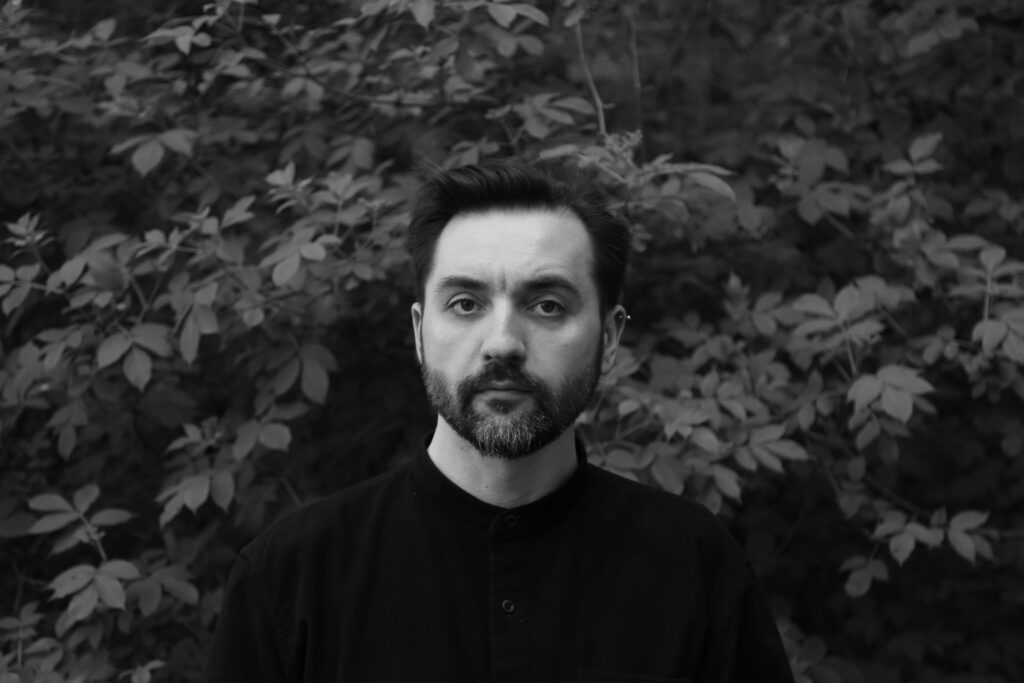
The city of Ivano-Frankivsk itself is already a ‘place of strength’. It is very comfortable and cool to live here. But what inspires me the most is the Ivano-Frankivsk region: small villages and towns around the Carpathians. The local traditions and culture of this region are impressive.
During my stay at the residency, I worked on the theme of the full-scale war in Ukraine in a wide sense and its devastating impact on both personal and general levels. My artwork consists of a series of collages in which I have used my own photographs and drawings, as well as images found in media. Although the process of creating this series was quite difficult, I’m satisfied with the intermediate result, which became part of the Working Room exhibition.
It’s hard for me to describe ‘my own’ Ivano-Frankivsk because I still feel like a temporary guest here. Although I’m always glad to come back.
Maria Leonenko, Kyiv
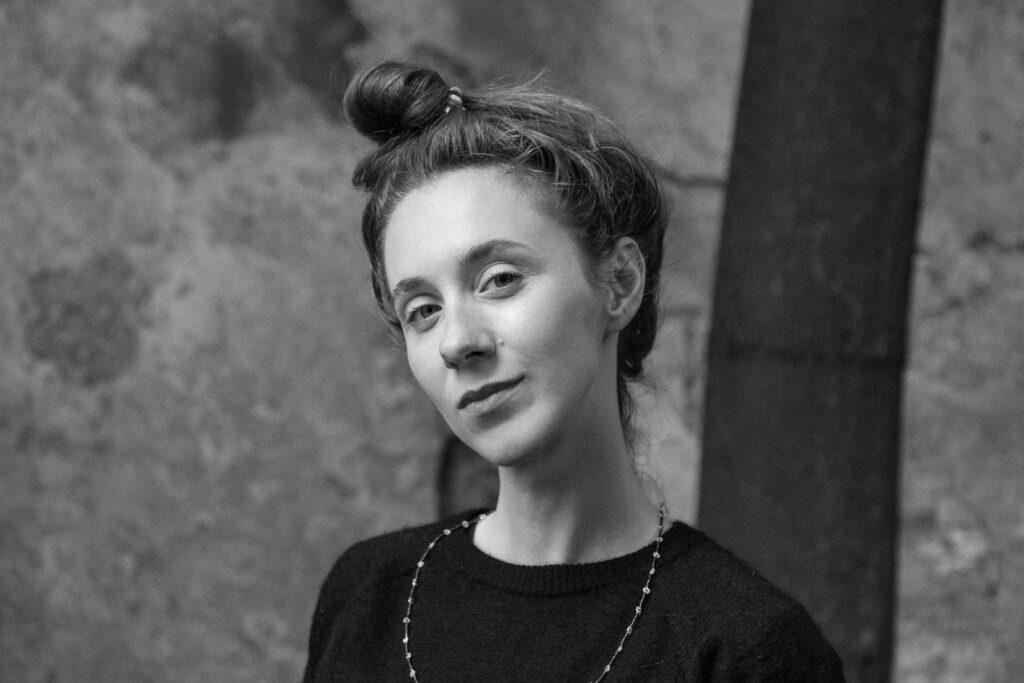
On the 9th day of the war, I arrived in Ivano-Frankivsk. I went to the GOST bar and met Yarema Stetsyk, a musician and artist, there. I asked him where artists gathered in Ivano-Frankivsk and where I should go. And he told me about the Asortymentna Kimnata gallery.
In the first weeks of the war, the artists and I found ourselves in a vibe of despair. We sat in the gallery with our backs against the wall and didn’t know what to do. Those reflections brought us closer.
We started to discuss what concerned us, and in the end, we understood: if doctors, journalists and people of other professions started to work more actively now than before February 24, then we should do the same.
Therefore, we sat down for a discussion and began to remember what our past life consisted of and how it is now changing under the influence of the war. It was clear that we had to create messages for the western world. It is important to work so that our needs and our culture are understood by people abroad. We should become louder on international platforms. In this regard, I really like what the artist Kateryna Aliinyk creates.
As an artist, I cannot do anything else now, except work for the country’s armaments. Now people give almost all the money they earn to the army to buy more weapons and destroy the enemy who wants to destroy us.
Sculpting helps me collect my thoughts and feelings. When I was thinking about the material, I didn’t want to take clay. I came up with something else: I kneaded the dough from a loaf of white bread, oil, sugar, salt, ashes and a ballpoint pen. For me, these materials have become military ones and a symbol of what our agricultural sector consists of.
I went all the way to get to know Ivano-Frankivsk—from being just a tourist to becoming a person who would like to settle here. And I’m extremely satisfied with this feeling.
The city slows you down and keeps you focused. Here I feel calm and balanced, I can both relax and work.
I think the locals always wanted Ivano-Frankivsk to be more visited, not just a transit point. And so it happened. To a large extent, this was facilitated by the emergence of the public restaurant Urban Space 100. During its history, this city belonged to several states, so the architectural eclecticism here is simply off the charts. While walking the streets you can see a mosaic of different historical layers forms before your eyes.
This city is very pedestrian. It is impossible to go for a walk in Ivano-Frankivsk without meeting acquaintances. You will definitely run into someone, hug them and talk. This feature of Ivano-Frankivsk fosters a different attitude towards people in me. Now, when I come to Kyiv, I also hug everyone more often, although there is no such culture in the capital, all people there are quite atomized. And in Ivano-Frankivsk, I know that even on weekdays I can come downtown in the evening, hang out somewhere and meet someone new. And it will not be something strange, it will not be perceived as an imposition on some company. Here you integrate into the local context faster. It seems to me that the population here is just perfect for an active social life.
In cities, I like natural objects the most. In Ivano-Frankivsk, this is a lake in the Shevchenko Park. I can feel a little bit of Kyiv there. And also the Bystrytsia river.
I also like the mosaic portrait of Natalia Kobrynska in the Ivan Trush Street. Sometimes I come there to wink at the Ukrainian feminist, to whom I owe the fact that I can do my work freely.
Yevhenii Arlov, Kyiv
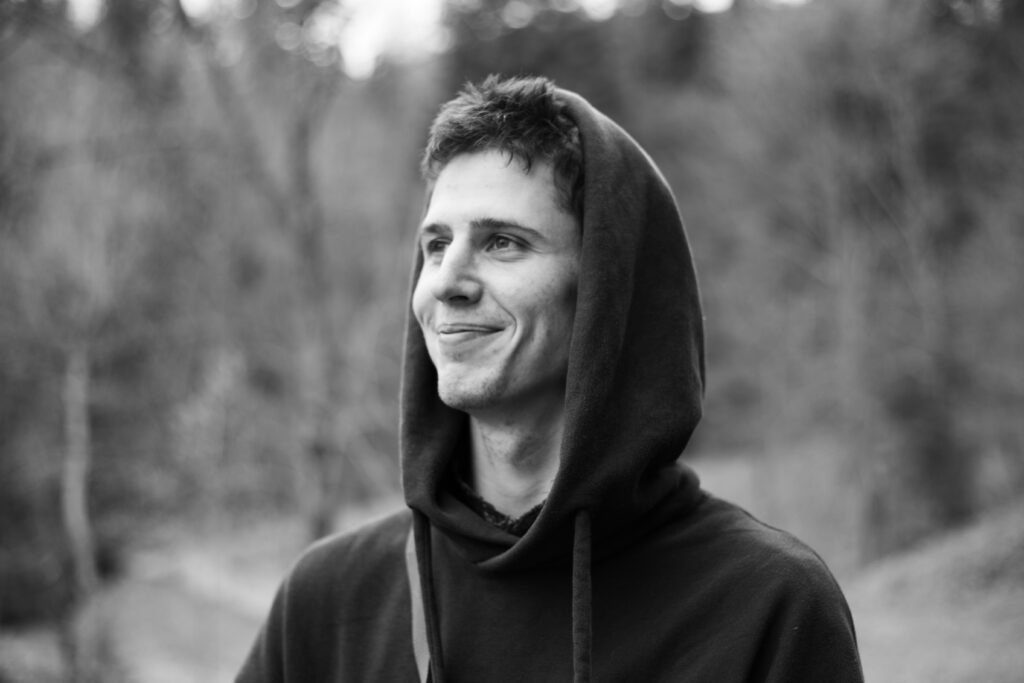
I associate my performance Budapest Gambit with today’s war. Similar to the Budapest Gambit in chess, in the memorandum, Ukraine sacrificed its nuclear potential and part of its armaments in order to gain a better position in the international arena. The text of the memorandum takes the form of poetry, which is contrasted with the context of the document. The document itself turns into a chessboard with figures.
I visited Ivano-Frankivsk for the first time in 2014, but back then our acquaintance was short, about 6-8 hours. At that time, I was traveling with my friends. We wanted to travel all over Ukraine. We drove through all the western regions, but were not able to get to the east—the war in Donbas just started. A more conscious acquaintance with Ivano-Frankivsk took place at the Detalizatsia Festival for Electronic Music and Contemporary Art, to which I was invited as a VJ.
Ivano-Frankivsk is a special city for me. I used to speak only Russian. I had a desire to switch to Ukrainian, but probably because of the Russian-speaking environment, I didn’t dare to do so for a long time. Arriving at Detalizatsia, I was amazed at how sincerely and consciously the local young people communicate in Ukrainian. This atmosphere inspired me to start speaking my native language.
Ivano-Frankivsk has something that other cities don’t. If we take, for example, the cultural sphere, then it is young people who actively establish cultural processes. Just like it is with Detalizatsia. On the one hand, it’s an ordinary music festival, there are similar ones in Kyiv, Kharkiv and other cities. However, it has its own special charm, peculiar to Ivano-Frankivsk. Given that the festival is audio-visual, it unites musicians and artists. This gives an opportunity to share different artistic directions and to introduce people to each other closer.
Ivano-Frankivsk is saturated with new people and art now. Kyiv will no longer be the leading one in this regard.
Such cultural decentralization had to happen once. In my opinion, Ivano-Frankivsk already has enough of everything for living. Now is the time to adopt the experience of those who come to the city and develop these assets.
In Kyiv, everyone is in a hurry. I even noticed such an internal rhythm in myself: you always have to do something quickly. Over time, you get tired of it. You can wake up in the morning without doing anything, and already have the feeling that you have worked for several hours. Ivano-Frankivsk is much calmer, balanced, and cozy.
My ‘place of strength’ in Ivano-Frankivsk… let it be the GOST bar. I know for sure: if I work in the gallery until the evening, then after that I should go to GOST. There I will definitely meet someone I know for a cup of coffee or something stronger. I guess the places of strength are constantly changing. Perhaps, someday everyone will get bored of GOST and young people will gather elsewhere. But for now, the whole gang’s here.
Mykola Ridnyi, Kyiv
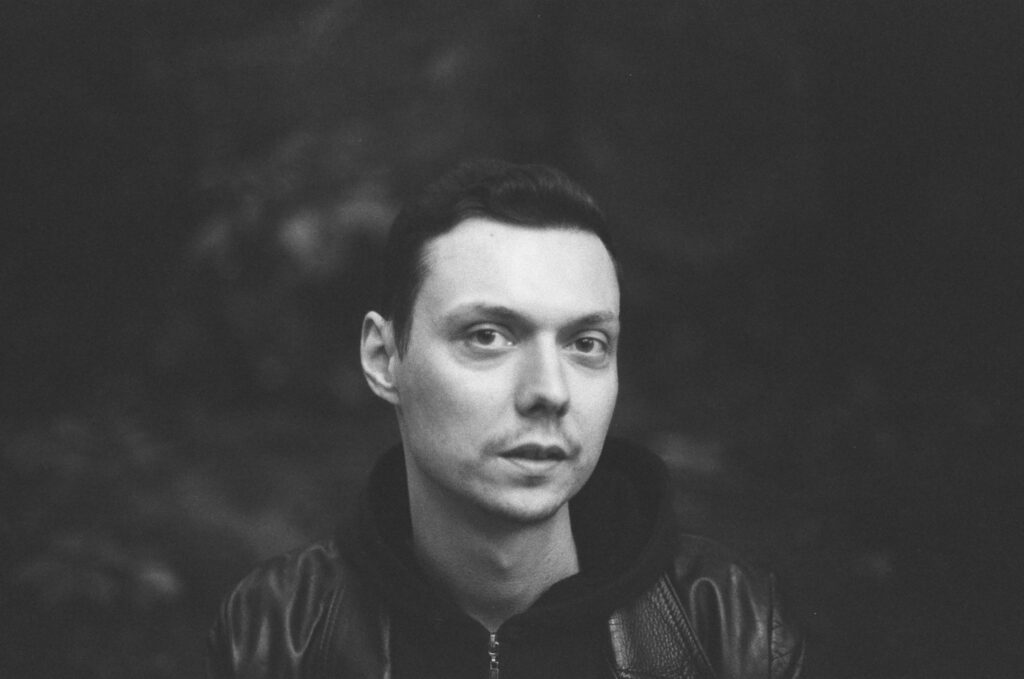
Ivano-Frankivsk is a compact city. Almost everywhere can be reached on foot. This probably also affects the specifics of the cultural community. All are friends because all are close to each other. As a person who lived in Kharkiv and Kyiv, I’m used to a different environment, namely, the environment of conflict. I mean the conflict that creates the dynamics of updating the cultural situation. Someone is pushed out by it, and someone, on the contrary, is encouraged by it. However, another process is felt in Ivano-Frankivsk, aimed at coexistence in a certain place and space.
A natural question arises: does such a hermetic situation need new people, in particular, from other regions and with different traditions?
Ivano-Frankivsk is a relaxed city. This is a common impression, but I will repeat it anyway: when you look at the horizon with mountains, it seems that there must be a sea somewhere, too. The natural surroundings and extraordinary culinary culture make the city almost a resort. Pretty much like Odesa, only with no sea and night robberies.
Ivano-Frankivsk is an (un)critical (?) city. Each region of Ukraine has its own cultural and historical traditions. And it’s quite normal to be critical of traditions. I wonder how young people of Ivano-Frankivsk who go to exhibitions in the Asortymentna Kimnata or for a drink to GOST feel about the Bandera monument? Why do people of Ivano-Frankivsk, again and again, elect a member of the Svoboda nationalist party as a mayor? The city creates an impression of different poles: a conservative tradition that clings to the past, and multiculturalism, which is aimed at the future. Maybe this is the conflict that has not yet manifested itself, but is already ahead?
Instead of P.S.
Nikita Kadan, Kyiv
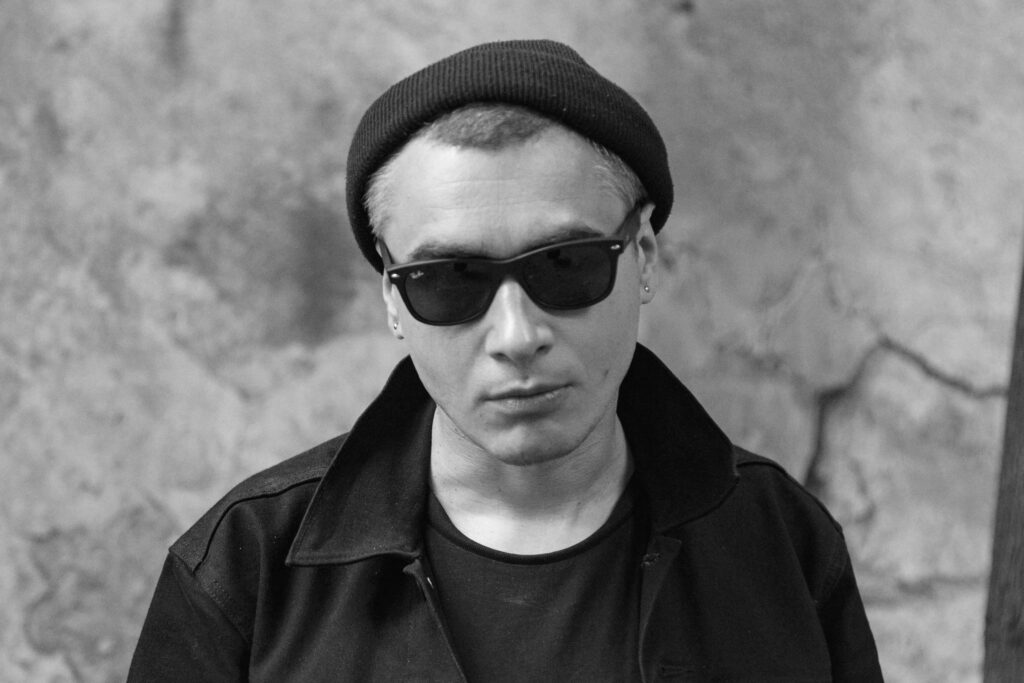
post impreza is a kind of ‘afterlife’, that’s what it sounds like if you know a little about the context. But I wonder: does the scale of this ‘afterlife’ must be measured by the actual life in relation to which the ‘after’ takes place? Can they be incommensurable?
The Golden Age is a construct characteristic of right-wing conservative consciousness. In fact, this ‘age’ can be replaced by anything. The main thing is for it to be thoroughly forgotten and to be just as thoroughly mythologized.
But the myth has its own levers of influence on reality. And, for practices that took place once, it creates a protective shell that is relevant today. These practices are beyond jurisdiction.
The bearers of the myth, the initiated, agreed among themselves on their importance. Of course, the problem then arises: how to relay this internally agreed value into a common history (art history, in this case). However, it depends on how much this belonging to the ‘common’ functions as a temptation. It usually does. Although, perhaps, here we are witnessing an exceptional case.
But what is more important to me is another aspect: the ‘common’ is truly common not when it is able to include virtually everything equally and in the same quality, but when it is constantly tempted by lost plots containing the perspective of revision. The common seeks for situations-exams potentially capable of denying it as a common and forcing it to change itself, to expand, to rebuild the mechanism. There is no guarantee that the history of Ivano-Frankivsk doesn’t contain such situations and plots.
Photos by Oleksandra Soloviova and Kris Voitkiv



